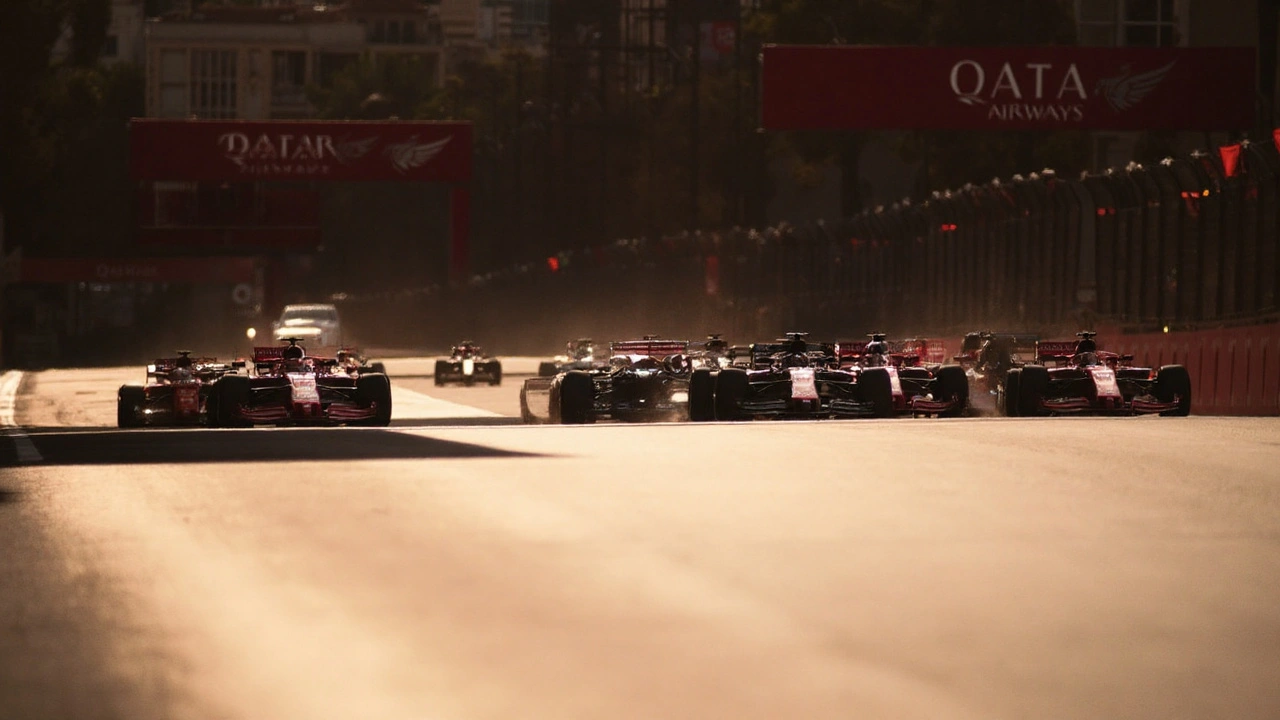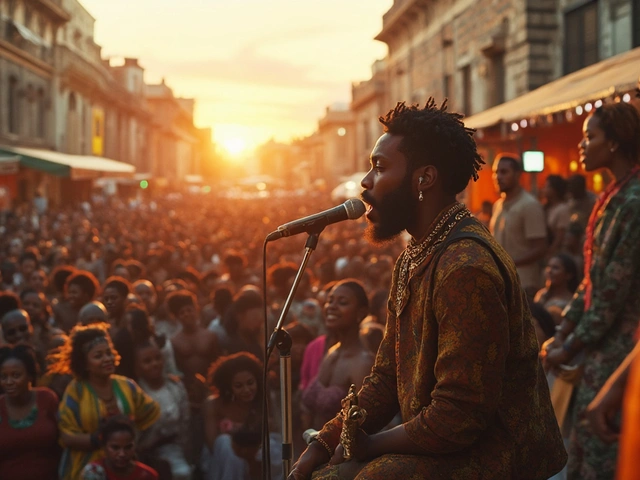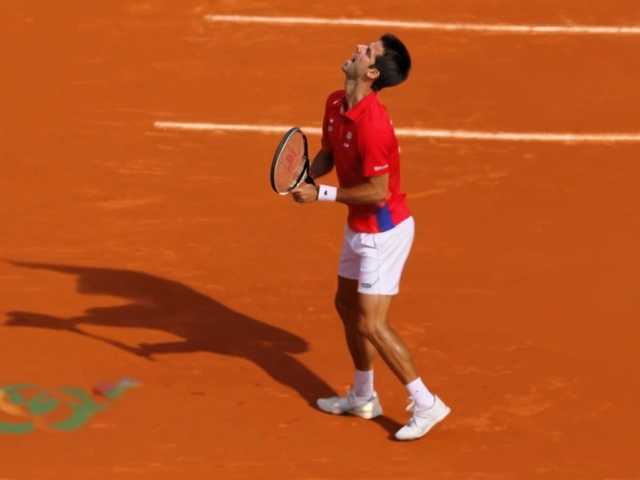Race recap: Verstappen’s masterclass in Baku
The 2025 Azerbaijan Grand Prix wrapped up on September 21 at the Baku City Circuit, delivering what felt like a one‑man show from the Red Bull star. After a flawless qualifying session, Max Verstappen turned the pole into a win that stretched over 51 laps and more than 306 kilometres. He stopped only once, kept his tyres in the sweet spot, and built a gap that left the rest of the field chasing a moving target.
Verstappen’s final race time—1 hour, 33 minutes and 26.4 seconds—shows how the Dutch driver blended raw speed with surgical strategy. While other drivers battled traffic and tyre wear, Verstappen’s lap times stayed consistently quick, allowing him to finish 14.6 seconds ahead of his nearest rival. For a street circuit as hard‑on‑the‑tires as Baku, that margin is huge and highlights the advantage of his low‑fuel start and flawless pit work.
George Russell, pushing a Mercedes that has shown strong pace all weekend, claimed second place. He never got close enough to challenge the leader, but his steady run earned him 18 points, keeping his championship hopes alive. Russell’s ability to keep the car on the limit through Baku’s tight corners and long straights reminded fans why he’s considered a future world champion.
Williams secured a surprise podium as Carlos Sainz, now wearing the green‑and‑blue livery, crossed the line third. The former Ferrari driver turned the Williams car into a point‑scoring machine, finishing just under 19.2 seconds behind Verstappen. Sainz’s experience helped him extract performance where the chassis was not the fastest, proving that driver skill can still make a big difference.
Young Mercedes rookie Kimi Antonelli continued his impressive debut season with a fourth‑place finish. He trailed the race leader by a little over 21.8 seconds, showing that his raw speed can translate into points on a demanding circuit. Liam Lawson, driving for the Racing Bulls entry, rounded out the top five, ending the race 33.3 seconds behind Verstappen and confirming the midfield’s tight competition.
The final classification of the top five looks like this:
- 1st – Max Verstappen (Red Bull Racing)
- 2nd – George Russell (Mercedes)
- 3rd – Carlos Sainz (Williams)
- 4th – Kimi Antonelli (Mercedes)
- 5th – Liam Lawson (Racing Bulls)
Practice, qualifying and the wider season picture
Baku’s three practice days set the tone early on. Friday’s first session gave McLaren’s Lando Norris the fastest lap, but the session was repeatedly halted by a red flag after debris littered the back straight and by a kerb problem at turn 16 that forced the marshals to intervene. When the track cleared, Mercedes‑Ferrari duo Lewis Hamilton, now in a Ferrari shirt, topped the second practice, beating teammate Charles Leclerc and Russell by a narrow margin. The third session, back on Friday, saw Norris reclaim the top spot, edging out Verstappen and Australian rookie Oscar Piastri, hinting at a closely contested weekend.
Qualifying turned into a short sprint for pole, and Verstappen delivered a perfect lap of 1:41.117 to lock out the front row. The rest of the field shuffled under changing track temperatures, but the key takeaway was the consistency of the Red Bull car across the long straight and the tight turn one complex. Mercedes struggled to find a perfect balance, and the Ferrari drivers, despite strong practice runs, couldn’t translate that into a top‑three start. The grid layout promised a race where overtaking would be limited, especially after the first safety car.
The Baku City Circuit stretches 6.003 km and blends narrow medieval streets with a high‑speed waterfront stretch that kisses the Caspian Sea. Its fastest section, the 2.2‑km straight, lets cars hit over 320 km/h before plunging into the chicane that leads to the historic Baku Fortress. For drivers, the track is a test of bravery on the long sweep and precision in the tight hairpins. The surrounding skyline, anchored by the Flame Towers, gives the race a visual punch that few other venues can match.
This race also highlighted the biggest off‑track storylines of the season. Lewis Hamilton’s move to Ferrari finally saw him on a podium‑capable car, and his immediate performance suggested a quick adaptation. Meanwhile, Kimi Antonelli, only 18, continued to impress. His fourth‑place finish marks the fastest rise for a rookie this decade, and his feedback on tyre degradation is already influencing Mercedes’ development road‑map. Sainz’s switch to Williams gave the team a veteran perspective that translated into immediate points.
With the win, Verstappen stretched his lead in the drivers’ standings, moving a comfortable 20 points ahead of his nearest challenger. Mercedes, collecting points from both Russell and Antonelli, closed the gap to Red Bull in the constructors’ table, keeping the battle alive as the season moves into its final third. Williams, boosted by Sainz’s podium, climbed out of the back‑marker zone, showing that strategic driver signings can change a team’s fortunes quickly.
Next up, the calendar turns to the United States Grand Prix in Austin, where the track’s fast corners and long straight will test the same strengths that shone in Baku. Teams will be fine‑tuning their low‑drag packages and tyre strategies, hoping to replicate the dominance of Red Bull or to sneak past them with smarter pit stops. For fans, the question now is whether the championship race will stay tight or whether Verstappen will pull away for another record‑breaking season.






18 Comments
That win really showed how Verstappen can dominate a street circuit 😃. The way he managed his tires and kept a clean stint was impressive. It’s great to see a driver who can blend raw speed with smart strategy. Baku was a perfect stage for his talent.
Yep its all about the low fuel start and the pit crew doing their job right. Max just kept the rhythm and let the car do the work.
Honestly, the race was a textbook example of how consistency beats flashiness, especially on a track that eats up rubber so quickly, and Verstappen’s team nailed the tyre window, the drivers behind simply couldn’t match the lap times, the pit stops were flawless, and the strategy was spot‑on, making the gap look inevitable.
Verstappen owned Baku.
Red Bull’s aero package just bulldozed the competition, period.
While the headlines celebrate the victory, let’s not overlook that the midfield battles were equally fierce, with several drivers extracting maximum performance from sub‑optimal machinery, a fact that speaks volumes about driver skill and team ingenuity.
True that the mid‑pack drama was lit, the way some teams stretched their tyres was mad impressive.
That was a solid effort from everyone, even wif the car wasn’t top tier. Congrats to the teams that made it happen.
Totally agree! The underdogs really showed heart 😊.
The strategic implications of this race are clear; Red Bull’s lead widens, yet Mercedes remains a credible threat if they can fine‑tune their low‑drag setup.
Exactly, and the points haul will be crucial for the constructors battle 🚀.
Oh great, another Verstappen win-just what the sport needed, more predictability and fewer surprises to keep us on the edge of our seats.
Sounds like another typical race weekend.
It’s fascinating how the narrative surrounding Verstappen’s dominance has evolved into a quasi‑mythology, where every win is framed as an inevitable outcome rather than a hard‑fought battle; this tendency not only diminishes the achievements of his rivals but also erodes the competitive spirit that fuels the sport’s intrigue. The Baku circuit, with its unique blend of high‑speed straights and constricted corners, should theoretically level the playing field, yet the data shows that Red Bull’s power unit and aerodynamic package simply overwhelm the opposition regardless of track characteristics. Moreover, the pit strategy employed by the team was nothing short of textbook precision, timing the sole stop to exacting milliseconds, which is a stark reminder that success in Formula 1 is as much about tactical acumen as raw speed. While analysts praise Russell’s consistency, his inability to break into Verstappen’s rhythm underscores a deeper issue: the current Mercedes chassis lacks the ultimate corner‑exit traction needed to capitalize on overtaking zones. Additionally, the surprise podium for Williams is more a testament to Sainz’s veteran savvy than any inherent superiority of the car, highlighting how driver experience can occasionally compensate for mechanical deficits. Yet, let’s not forget that the midfield frenzy, featuring Kimi Antonelli’s impressive fourth place, illustrates that raw talent is proliferating across the grid, challenging the established hierarchy. The tyre degradation plots from this weekend reveal a pattern where the soft compounds lose optimal performance far earlier than anticipated, forcing teams into a delicate balancing act between aggression and preservation. In this context, the championship points gap, now a comfortable twenty points, should be viewed with cautious optimism rather than complacent triumph, as history has shown that leads can evaporate swiftly under changing conditions. The upcoming United States Grand Prix will test the teams’ ability to adapt their aerodynamic packages to a circuit that rewards both downforce and straight‑line stability, potentially shaking up the current order. Fans who cling to the notion of an unstoppable Verstappen may be disappointed if the Austin track exposes any hidden weaknesses in Red Bull’s setup. Conversely, if the Dutch driver continues to dominate, it may prompt regulatory bodies to consider adjustments aimed at enhancing parity. Overall, the season narrative is at a pivotal juncture, where strategic ingenuity, driver development, and technical innovation converge to determine the ultimate champion. As such, each race now carries heightened significance, and the margins for error have narrowed dramatically. In summary, while the Baku victory adds another trophy to Verstappen’s cabinet, it also serves as a microcosm of larger dynamics at play within Formula 1, underscoring the intricate interplay between engineering excellence and human skill. Therefore, the next few rounds will likely be the definitive test of whether Red Bull’s dominance is sustainable or merely a temporary advantage.
Honestly, the data you dropped is on point, but let’s be real – Red Bull’s budget and engineering prowess make it hard for any underdog to truly threaten them without a major rule change.
Indeed, the spectacle of Baku has become a stage where only the most prepared survive, and while the excitement is palpable, one cannot help but feel a tinge of melancholy for the sport’s competitive soul.
I see your point, and it reminds us that even the greatest champions need fresh challenges to stay motivated.
Well said it’s a thrilling season ahead